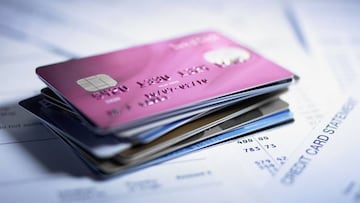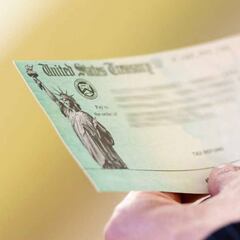Which credit cards have low interest rates?
A new report shows that credit card debt in the US has risen at the fastest rate in nearly a quarter of a century as the American economy starts to return to normality.


New data published by the New York Federal Reserve on Tuesday showed that household credit card debt rose at the highest rate for 22 years during the fourth quarter of 2021. The total credit card debt in the United States rose by $52 billion.
However the total credit card balance in the US is still $67 billion lower than it had been at the start of the pandemic, now sitting at $860 billion. Furthermore the rate of credit card delinquency has fallen and the large fourth quarter rise did coincide with the holiday period, when household spending typically increases.
Consumers are taking on more credit card debt, just as interest rates are expected to rise https://t.co/ZVsL1m2nXu
— CNBC Make It (@CNBCMakeIt) February 15, 2022
It seems like consumers are once again feeling confident about their financial prospects and feel a greater sense of security knowing that pandemic-related losses of income are now less likely. With millions of Americans choosing to use credit cards, which ones offer the lowest interest rates?
Consumer advice site Nerd Wallet outlines the best deals
Selecting a credit card can be a difficult business and one that can have some pretty severe financial consequences if you choose poorly. Social initiative Nerd Wallet aims to support consumers by “taking a stand against financial inequality” and helping to provide “access to equitable financial products and services” in low-income communities.
The folks at Nerd Wallet have recommended the following range of low interest credit cards to suit a variety of financial situations…
Best for long 0% intro APR period
BankAmericard credit card (Regular Rate of 12.99%-22.99% Variable APR)
Best for 0% intro period and flat-rate cash back
Wells Fargo Active Cash Card (Regular Rate of 14.99%-24.99% Variable APR)
Best for longest 0% intro APR period
Wells Fargo Reflect Card (Regular Rate of 12.99%-24.99% Variable APR)
Best for 0% intro period and bonus category cash back
Discover it Cash Back (Regular Rate of 11.99%-22.99% Variable APR)
Best for 0% intro period and ongoing cash back
Chase Freedom Unlimited (Regular Rate of 14.99%-23.74% Variable APR)
Best for 0% intro period and grocery & gas rewards
Blue Cash Everyday® Card from American Express (Regular Rate of 13.99%-23.99% Variable APR)
What has fuelled the increase in US credit card debt?
It is unlikely to have escaped anyone’s attention that prices have been on the rise across the United States in recent months as the economic recovery continues. The fallow period during the first year of the pandemic has been replaced with new impetus in the consumer sector and supply chain issues which have pushed up prices.
Writing in the New York Fed’s report research officer Donghoon Lee explains: “We’re beginning to see the reversal of some of the credit card balance trends seen during the pandemic, namely reduced consumption and the paying down of balances.”
Related stories
“At the same time, as pandemic restrictions are lifted and consumption normalizes, credit card usage and balances are resuming their pre-pandemic trends,” he adds.
As the American economy moves towards pre-pandemic footing the uptake of credit cards and balance of credit card debt will likely rise accordingly.

